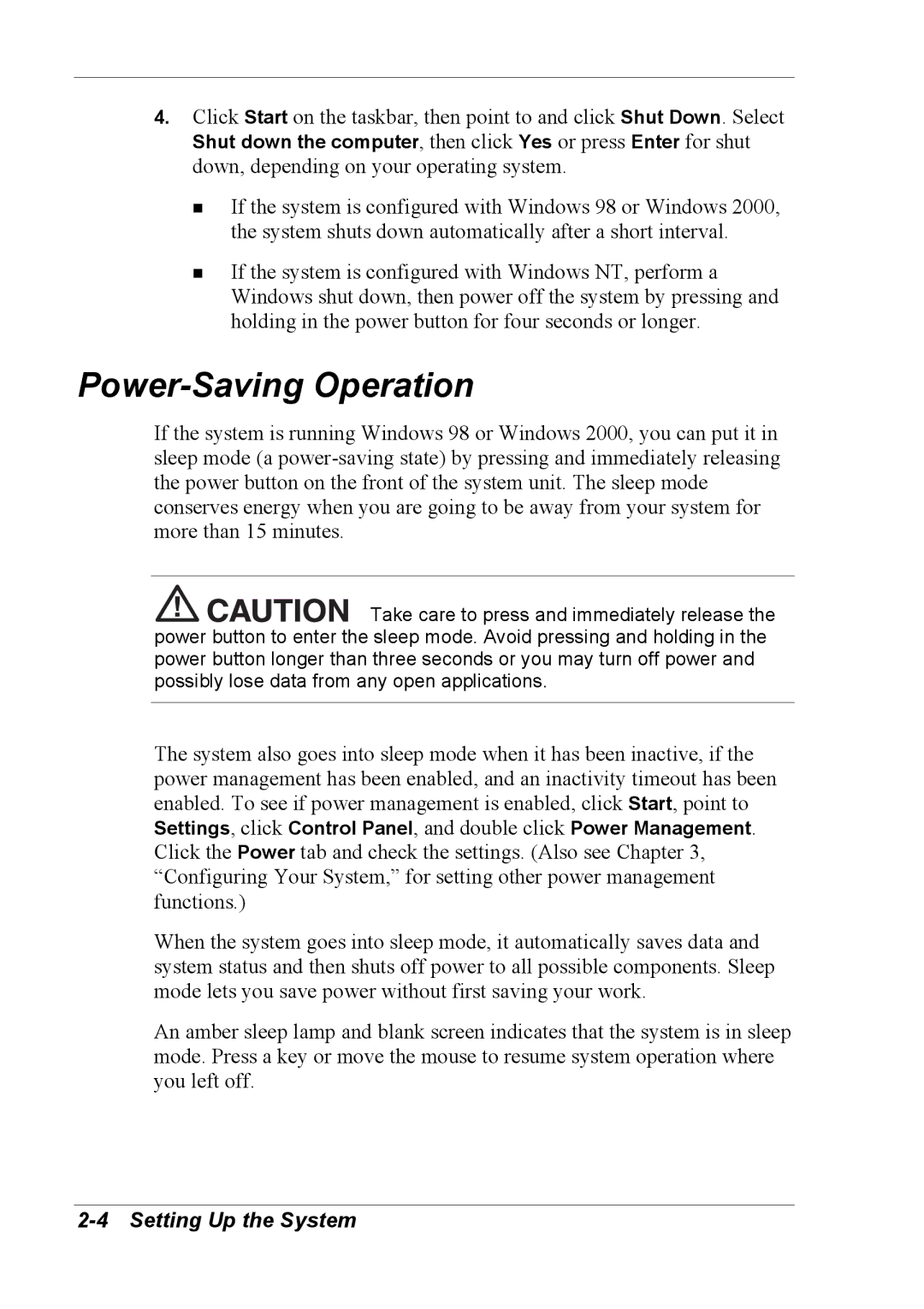
4.Click Start on the taskbar, then point to and click Shut Down. Select
Shut down the computer, then click Yes or press Enter for shut down, depending on your operating system.
!If the system is configured with Windows 98 or Windows 2000, the system shuts down automatically after a short interval.
!If the system is configured with Windows NT, perform a Windows shut down, then power off the system by pressing and holding in the power button for four seconds or longer.
Power-Saving Operation
If the system is running Windows 98 or Windows 2000, you can put it in sleep mode (a
![]()
![]()
![]()
![]()
![]()
![]()
![]()
![]() Take care to press and immediately release the power button to enter the sleep mode. Avoid pressing and holding in the power button longer than three seconds or you may turn off power and possibly lose data from any open applications.
Take care to press and immediately release the power button to enter the sleep mode. Avoid pressing and holding in the power button longer than three seconds or you may turn off power and possibly lose data from any open applications.
The system also goes into sleep mode when it has been inactive, if the power management has been enabled, and an inactivity timeout has been enabled. To see if power management is enabled, click Start, point to Settings, click Control Panel, and double click Power Management. Click the Power tab and check the settings. (Also see Chapter 3, “Configuring Your System,” for setting other power management functions.)
When the system goes into sleep mode, it automatically saves data and system status and then shuts off power to all possible components. Sleep mode lets you save power without first saving your work.
An amber sleep lamp and blank screen indicates that the system is in sleep mode. Press a key or move the mouse to resume system operation where you left off.
